18 Different Types of Garden Weeds (With Pictures)
-

- Last updated:
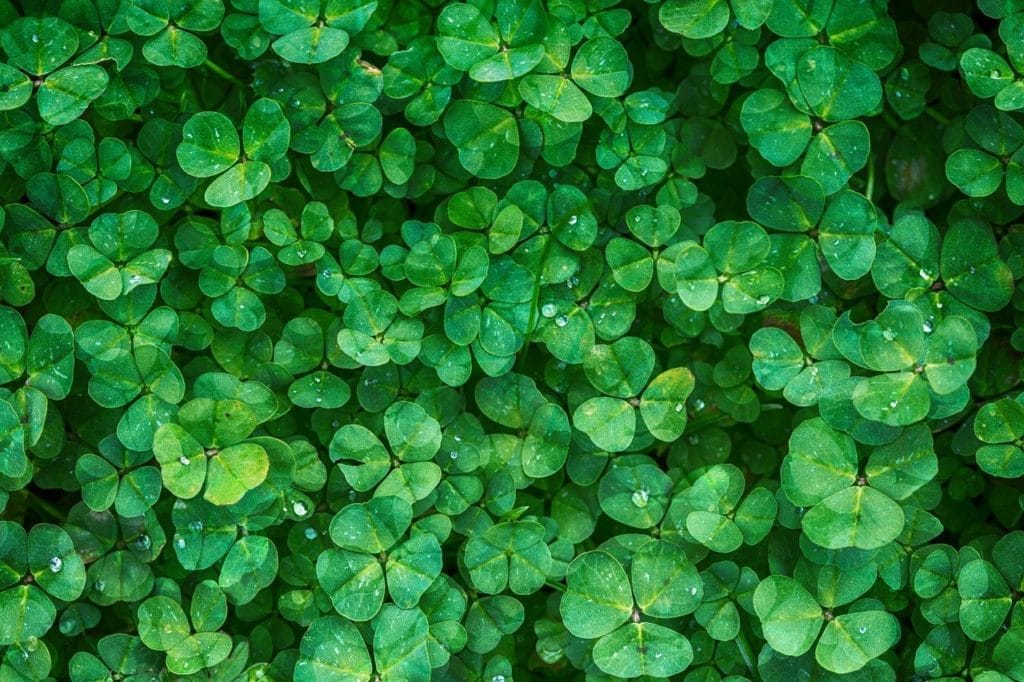
Weeds are a constant annoyance to anyone trying to keep a healthy garden or lawn. Weeds can appear without warning and be extremely difficult to get rid of. Some weeds are even harmful if touched or ingested making it even more important to identify and eliminate them when they appear. If you aren’t sure what that strange plant is that appeared in your garden is, it is likely a weed.
Here are 18 different types of garden weeds that commonly appear where they are not wanted.
The 18 Different Types of Garden Weeds
1. Dandelion
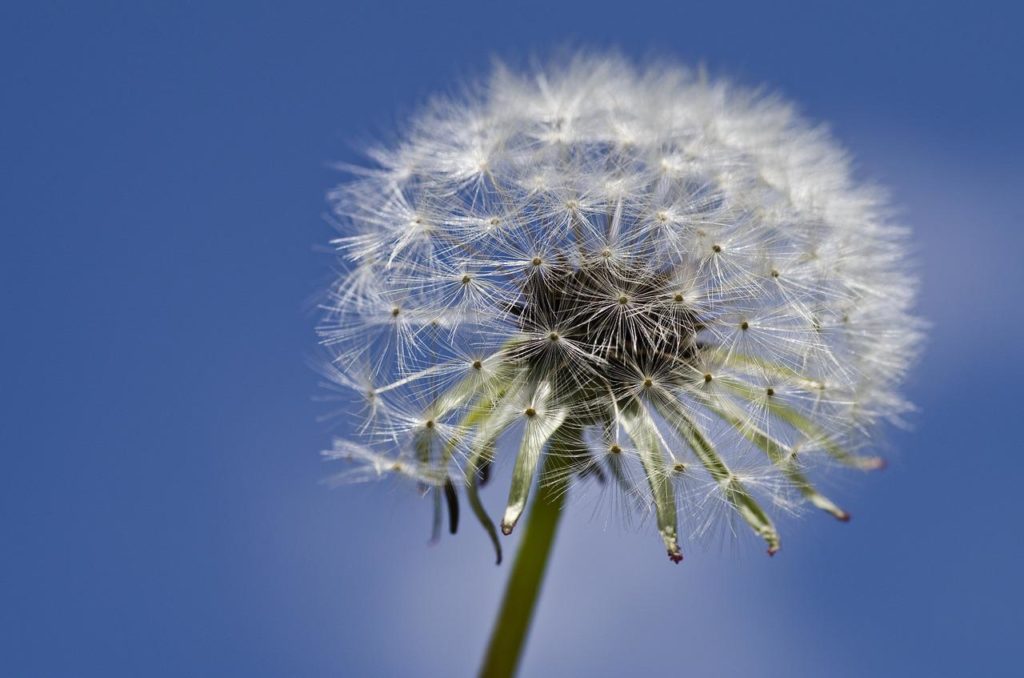
| Scientific Name | Leontodon taraxacum |
| Type | Herbaceous |
| Harmful? | No |
The common dandelion is perhaps the most well-known weed in the world. It is known for its distinctive single yellow flower and the unique way that it dies and spreads its seeds. Some people don’t mind spotting the occasional dandelion, but the problem is they can spread like wildfire. One dandelion can quickly turn to a hundred and soon your precious lawn is being overrun by these herbaceous weeds.
2. Common Ragweed

| Scientific Name | Ambrosia artemisiifolia |
| Type | Ragweed |
| Harmful? | Yes |
Common ragweed can grow upwards of 6 feet tall and is identified by hairy triangular leaves. Ragweed looks innocuous, but it is one of the biggest sources of hay fever in the areas where these weeds grow. Ragweed likes to grow in fields, along roads, and in unattended areas. Ragweed is known for being a major source of general allergies as well. If you have allergies or live with anyone who has allergies, it will benefit you to remove and destroy ragweed whenever possible.
3. Giant Ragweed
| Scientific Name | Ambrosia trifida |
| Type | Ragweed |
| Harmful? | Yes |
Giant ragweed, unsurprisingly, is extremely similar to common ragweed, just much larger. Giant ragweed can grow up to 12 feet tall. That is one big weed. Like its common cousin, giant ragweed is a major source of hay fever and can cause extreme allergic reactions to people sensitive to pollen. Giant ragweed likes to grow in fields and soggy floodplains. Eliminating giant ragweed can help cut down on pollen allergens in the air.
4. Poison Oak
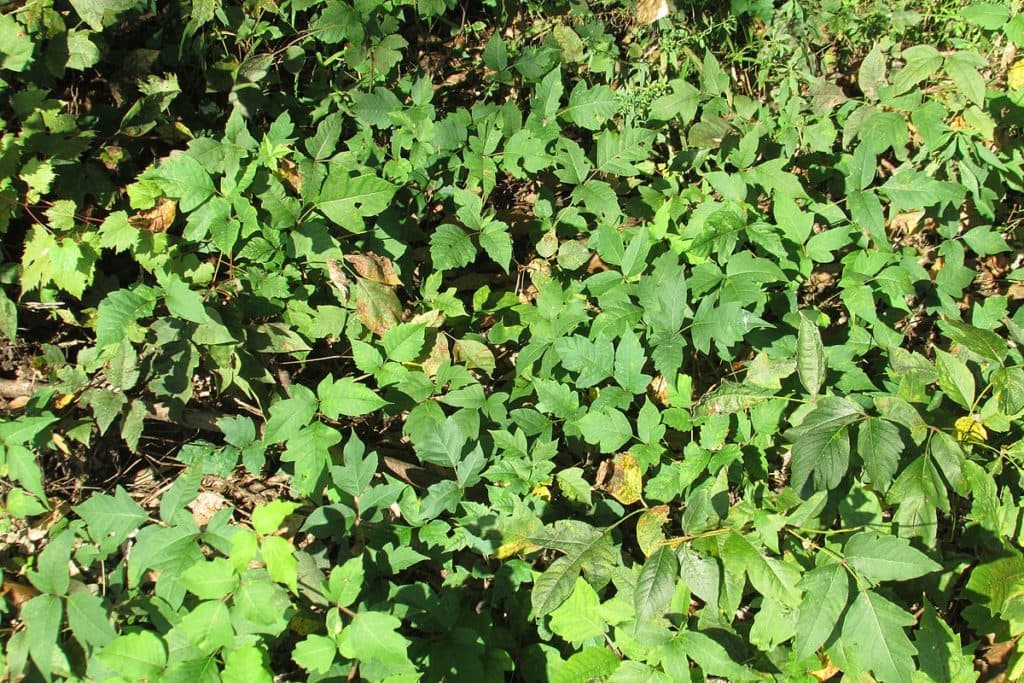
| Scientific Name | Toxicodendron pubescens |
| Type | Sumac |
| Harmful? | Yes |
Poison oak is an insidious weed that appears and looks harmless at first. They grow into bushy plants that can be 3 feet tall with leaves that closely resemble the leaves of a common white oak. Do not be fooled. Poison oak can cause terrible itchy rashes when touched, and they are extremely difficult to rip out once they get rooted. Keep an eye out for poison oak because eliminating it when it is small is much easier than getting rid of it when it is fully mature.
5. Poison Ivy
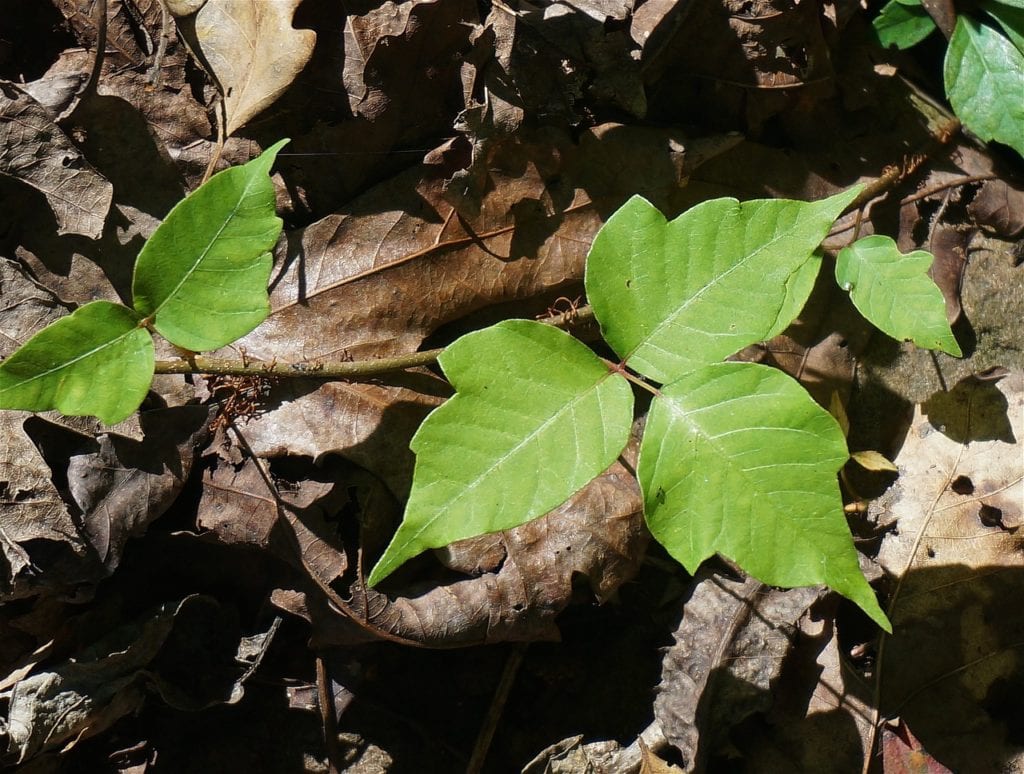
| Scientific Name | Toxicodendron radicans |
| Type | Sumac |
| Harmful? | Yes |
Poison ivy is one of the most infamous weeds in the United States. Often spotted for its three shiny leaves, poison ivy causes nasty cases of contact dermatitis in people who are unlucky enough to brush up against it. Poison ivy can appear on the edges of your property, especially near wooded areas, but can also appear in your garden. If you find poison ivy, it is prudent to remove it immediately but make sure to wear gloves, long sleeves, and pants while doing so. You do not want to come in contact with the plant at any point.
6. Poison Sumac
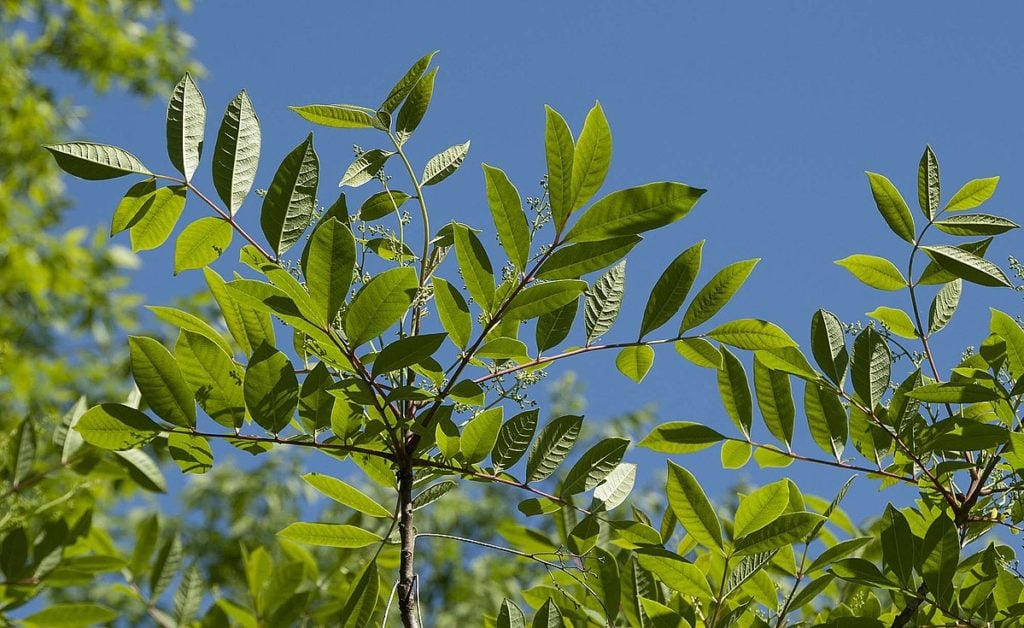
| Scientific Name | Toxicodendron vernix |
| Type | Sumac |
| Harmful? | Yes |
Poison sumac is the last weed that forms the unholy trinity of poison weeds. Like its close relatives, poison ivy and poison oak, poison sumac causes horrible contact dermatitis if it touches your skin. Poison sumac has the unpleasant characteristic of being extremely dangerous when burned as well. If you burn your brush, be absolutely sure that you are not burning poison sumac because the chemicals can cause severe damage to the lungs if inhaled.
7. Crabgrass
| Scientific Name | Digitaria |
| Type | Grass |
| Harmful? | No |
Crabgrass is a gardener’s worst nightmare. It can appear intermingled with regular grass and quickly become rooted. Its ability to appear in small patches amidst regular grass makes it extremely hard to eliminate. Worst of all, crabgrass is ugly and scratchy and stands out in a healthy yard like a sore thumb. The best way to eliminate crabgrass is to prevent it from growing at all by using pesticides during the growing season because once it gets entrenched, it is nearly impossible to root out.
8. Pigweed
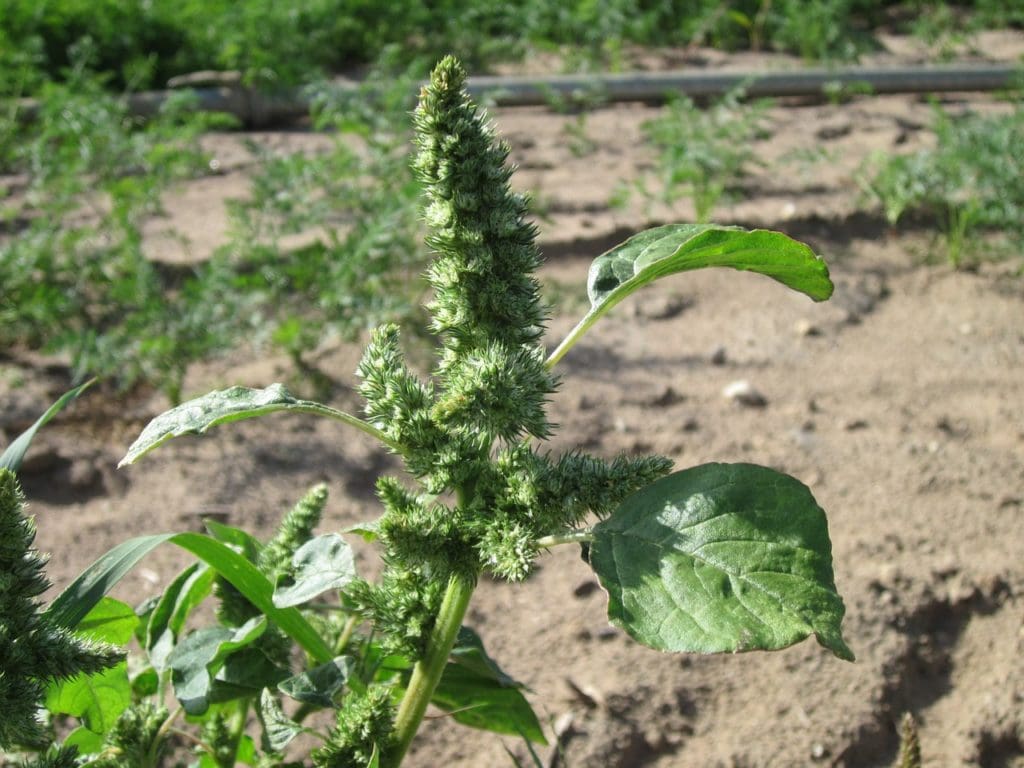
| Scientific Name | Amaranthus retroflexus |
| Type | Amaranth |
| Harmful? | No |
Pigweed is one of the most common weeds. Even if you don’t think you know what pigweed is, you have definitely seen it before. It is one of the most weedy-looking weeds in existence. It is tall and tiered with a tufty top, and when people see it, they automatically know it’s a weed. Pigweed is also known as amaranth, and parts of the plant are actually edible. However, most people don’t want to eat weeds. They just want to eliminate them. If you spot pigweed growing in your garden, the best way to deal with it is to simply pull it out by the root. Many pigweed plants can be identified by their distinctive, red-colored roots.
9. Canada Thistle
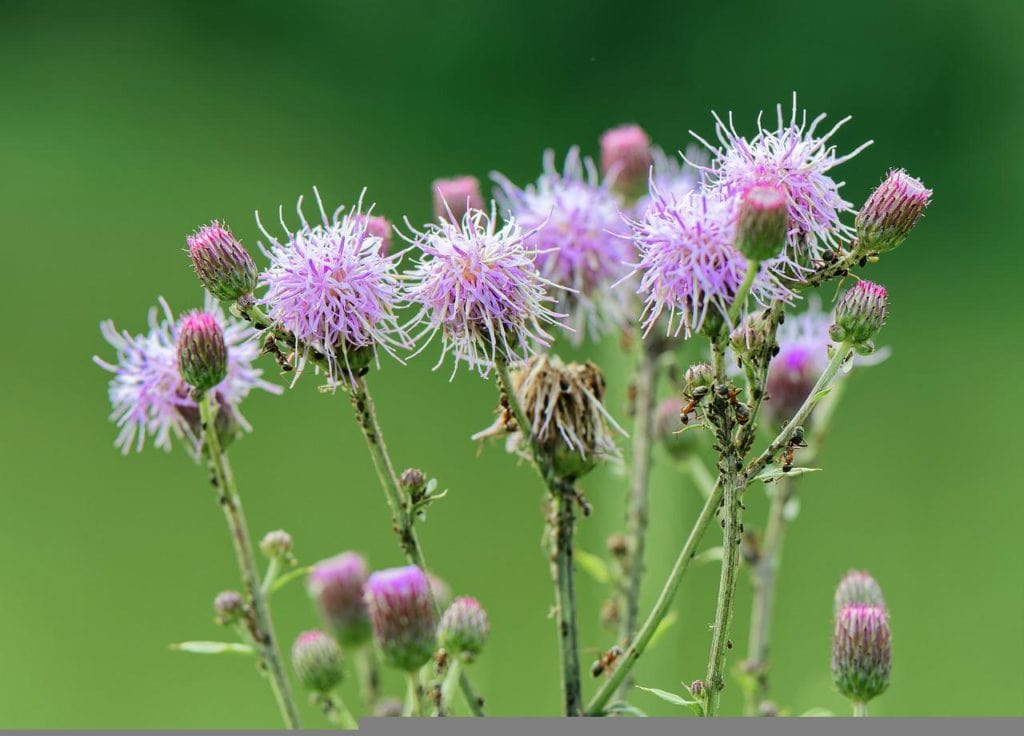
| Scientific Name | Cirsium arvense |
| Type | Aster |
| Harmful? | No |
Canada thistle, also known as creeping thistle, is one of the most prolific species of thistle. These plants grow continuously, can stretch up to 5 feet in height, and grow back year after year. They are best spotted in the summer when their distinctive flowers bud and bloom. Canada thistle is an irritating weed to manage because it spreads via seed, shoot, and root. This allows it to lay dormant in the winter and come back even after you think you have eliminated it.
10. Kudzu
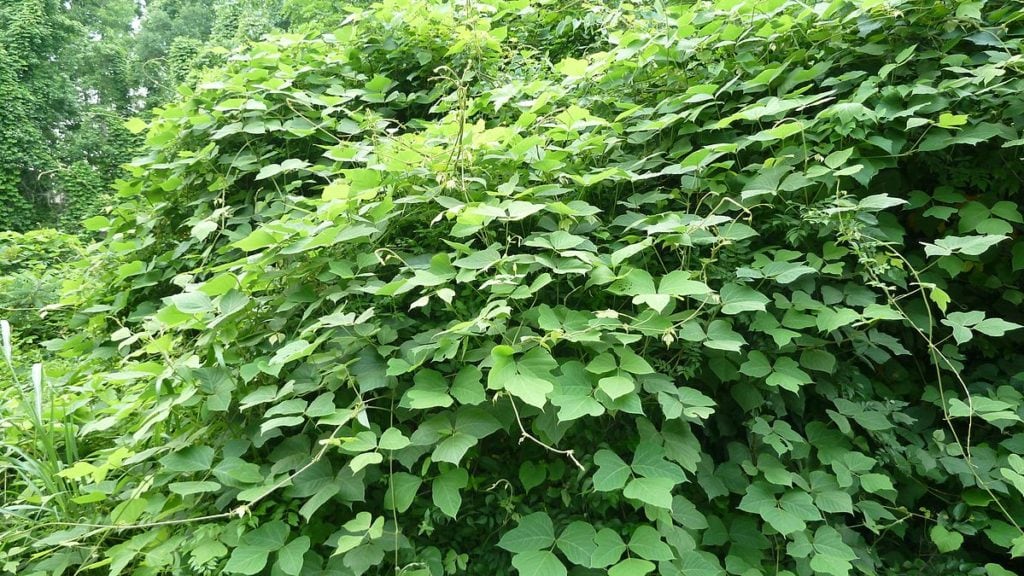
| Scientific Name | Pueraria montana |
| Type | Vine |
| Harmful? | No |
Kudzu vine is one of the most infamous weeds in the southern parts of the United States. Kudzu was originally grown as a source of livestock feed and as a way to shore up loose soil. However, the kudzu took a liking to the United States too well, and suddenly it became one of the most invasive weeds in history. Kuzu is infamous for completely coating entire hillsides and yards in its thick green ropey vines. If you spot kudzu growing anywhere near your garden or yard, you need to eliminate it as quickly as possible because it has the potential to cover everything around your home.
11. Stinging Nettle
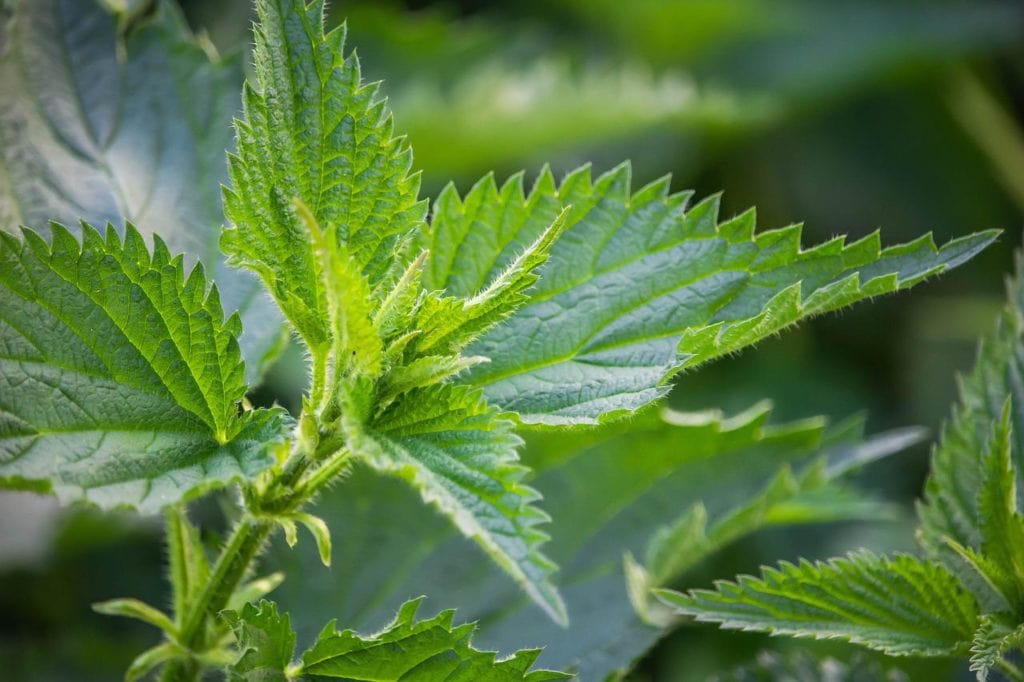
| Scientific Name | Urtica dioica |
| Type | Nettle |
| Harmful? | Yes |
Stinging nettle is one of the more annoying weeds to find. People often get acquainted with stinging nettle when they accidentally bump into it and get stung. Stinging nettle is covered in tiny sharp hairs that cause a big shot of pain when they touch your skin. Stinging nettle can rapidly reproduce, so if you spot one, it is best to eliminate it before it turns into a party of nettles. In clusters, stinging nettle is very difficult to eliminate without getting stung repeatedly, making them a very obnoxious weed to encounter.
12. Clover
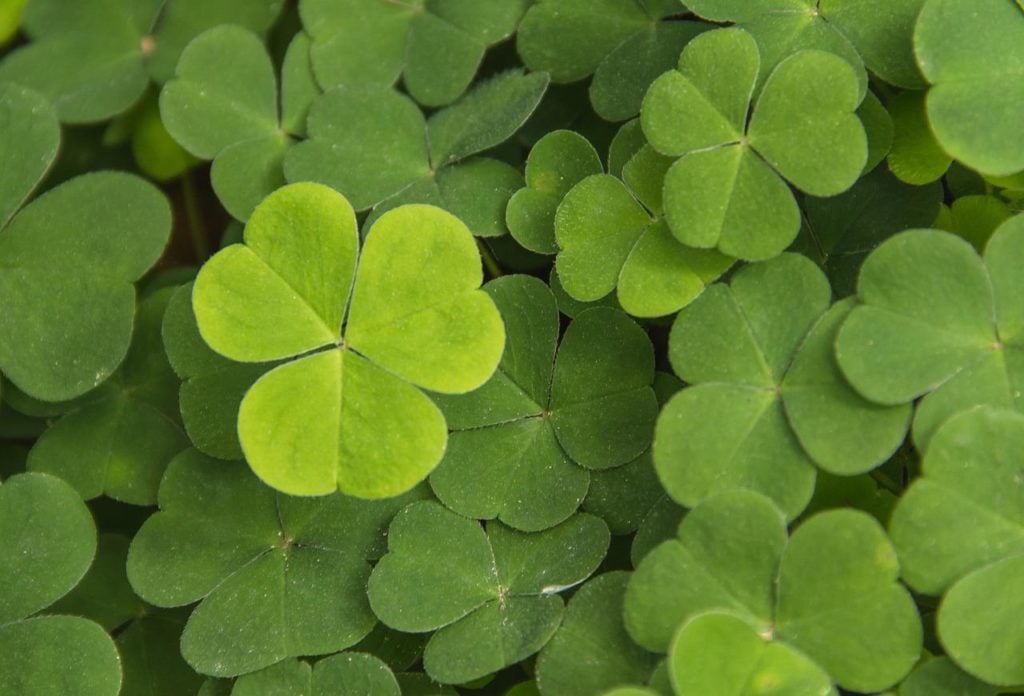
| Scientific Name | Trifolium |
| Type | Herbaceous |
| Harmful? | No |
Clover is best known for occasionally growing mutated varieties that have four leaves instead of three. But you won’t feel very lucky if you find your grass overrun by clover. Clover starts small but can rapidly overtake a healthy lawn. Clover will replace healthy grass over time, sometimes without you even realizing, until you look outside and realize your backyard is all clover and no grass. This is a suboptimal outcome. Clover’s small size and wide distribution make it difficult to remove pockets of this fast-spreading weed when they appear. Maybe you can find a four-leafed clover when pulling them out of your garden. Good luck.
13. Creeping Buttercup

| Scientific Name | Ranunculus repens |
| Type | Buttercup |
| Harmful? | Yes |
Creeping buttercup is an unwanted relative of the common buttercup. It still features the distinct yellow flower that many people enjoy, but the creeping variety grows quickly and can choke out healthy grass and flowers. Creeping buttercup is also toxic despite its petite appearance. If fresh creeping buttercup is ingested, it can cause severe abdominal distress and can even be fatal if eaten in large amounts. Do not let the benign-looking flower fool you. Creeping buttercup needs to be eliminated where it is found.
14. Common Horsetail
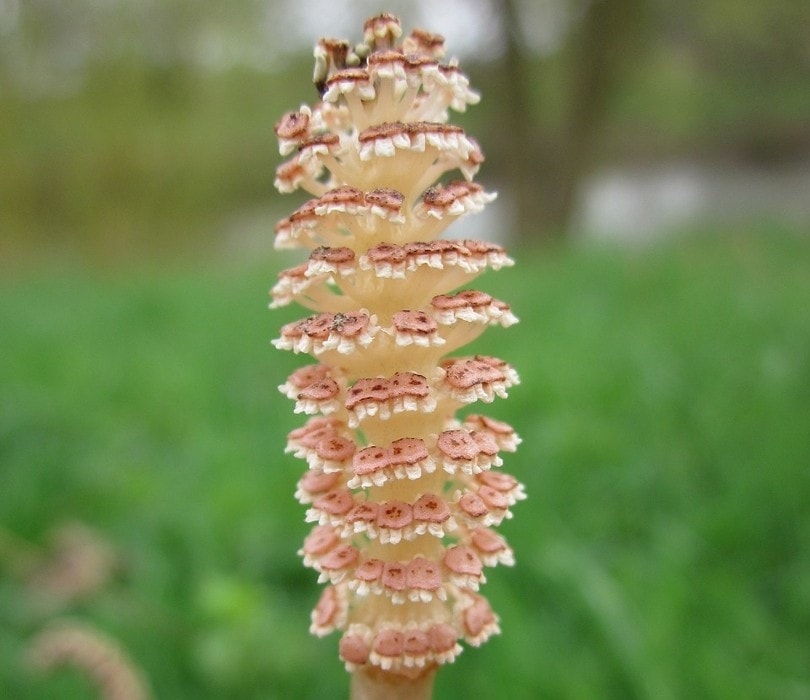
| Scientific Name | Equisetum arvense |
| Type | Herbaceous |
| Harmful? | Yes |
Common horsetail is an herbaceous weed that is related to certain types of ferms. Horsetail is dangerous to horses, where it gets its name from. Horsetail can hide in good grazing grass and sicken horses that munch on the horsetail without knowing it. Common horsetail puts down deep roots and can be hard to eliminate in areas where it is prevalent. While horsetail is harmful to equine species, it is not generally harmful to people.
15. Japanese Knot Weed
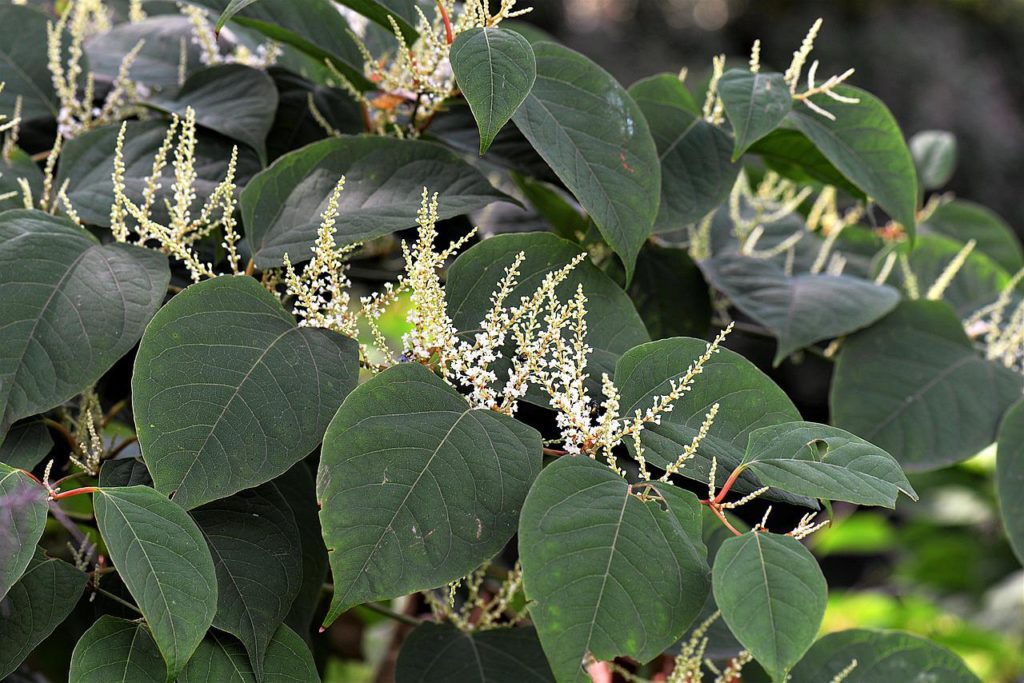
| Scientific Name | Reynoutria japonica |
| Type | Knotweed |
| Harmful? | No |
Japanese knotweed is a highly invasive species in the United States that rapidly grows and chokes out native species. This bushy plant can grow up to 10 feet tall and has thick ropy innards that are extremely hard to cut through and get rid of effectively. Japanese knotweed is a nuisance because when it appears it can grow rapidly and take over small areas. After it is established, getting rid of the Japanese knotweed can be an arduous process.
16. Mexican Prickly Poppy
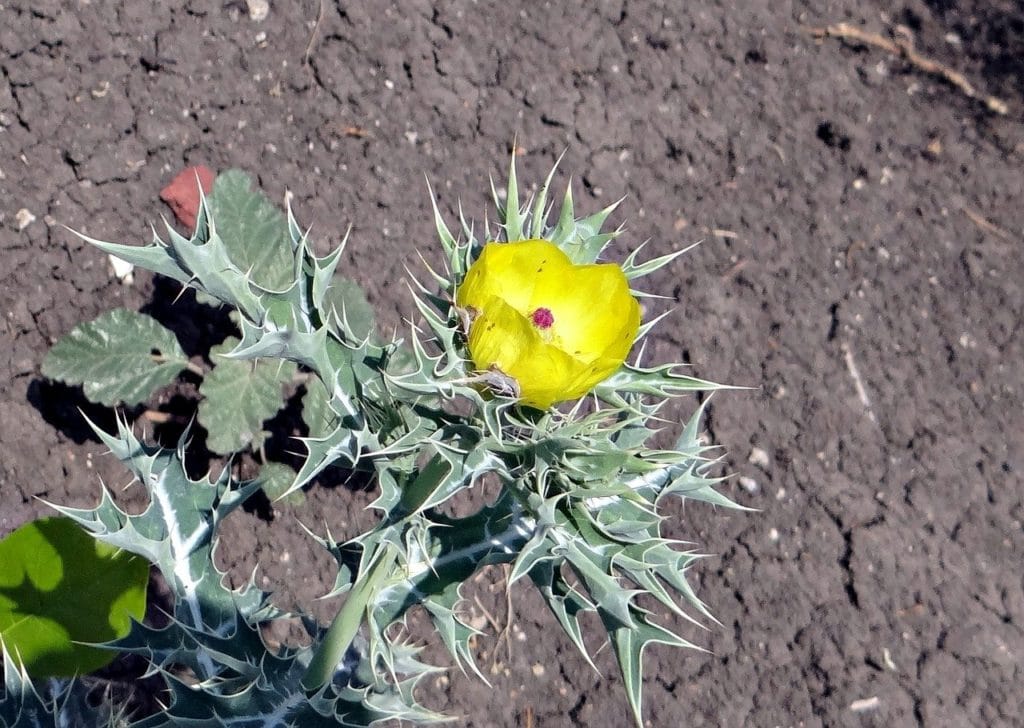
| Scientific Name | Argemone mexicana |
| Type | Poppy |
| Harmful? | Yes |
Mexican prickly poppy sounds whimsical, but these weeds are prolific and harmful. These weeds start with a small interesting looking yellow flower and quickly spread and grow prolifically. They have pointy leaves and a bright yellow flower. Mexican prickly poppy is harmful to livestock and humans. The seeds are extremely toxic and ingesting them can cause serious illness and even death. Luckily, most things avoid eating them on their own, but the risk is still there.
17. Broad Leafed Dock
| Scientific Name | Rumex obtusifolius |
| Type | Knotweed |
| Harmful? | No |
Broad leafed dock, also known as bitter dock, is a very common species of knotweed that grows prolifically all over the United States. It is identified by its broad, purple-streaked leaves. This weed grows in clusters. The broad-leafed dock is annoying because it is a perennial plant that has a high rate of seed spread, making it extremely difficult to eradicate completely. Broad leafed dock is a nuisance weed, but it is not harmful.
18. Milk Thistle

| Scientific Name | Silybum marianum |
| Type | Noxious |
| Harmful? | Yes |
Milk thistle is a noxious weed that can grow up to 6 feet tall. They are identified by their large purple flower that perches atop the tall stem. Milk thistle is harmful to livestock and can cause nitrate poisoning if ingested by a grazing animal. They also outcompete natural forage that is good for animals to eat. In some areas, milk thistle is a government-designated weed that is flagged for immediate removal wherever it is found. If you spot milk thistle growing in your area, ignore the flower and pull it up.
What Is The Definition Of Weed?
There are legal definitions for weeds. In some countries, there has been legislation passed that defines certain species of plants as noxious weeds that need to be removed by law. In some areas, highly invasive plants have been designated for removal by government agencies in order to help protect the local ecosystem from being overrun by hostile plants.
Colloquially, weeds are any plant that grows where you don’t want it, especially plants that are harmful in some way. Weeds are usually a nuisance because of how quickly they grow and spread and their ability to overtake other plants in the area. By this definition, anything can technically be a weed. If you have an invasive outbreak of rose bushes in a garden that should only have petunias in it, the roses would be considered a weed.
What Is The Best Way To Eliminate Weeds?
Each weed is different, so there is no one size fits all approach to eliminating them. Some weeds respond best to preventative measures. Other weeds can simply be pulled out by their roots and thrown away. Other weeds need intensive herbicide treatment to kill. If you are wondering what the best way is to eliminate your specific weed infestation you can use online resources or consult your local extension office for more information.
Conclusion
These are the most common garden weeds that plague garden beds and lawns across North America. If you find any of these weeds growing around your home it is best to get rid of them before they can become an even bigger headache. But there are even more weeds than just these. Keep an eye out for odd-looking plants and unwanted growths in and around your garden. They could turn out to be harmful or invasive weeds.
Featured Image Credit: damesophie, Pixabay
Contents


